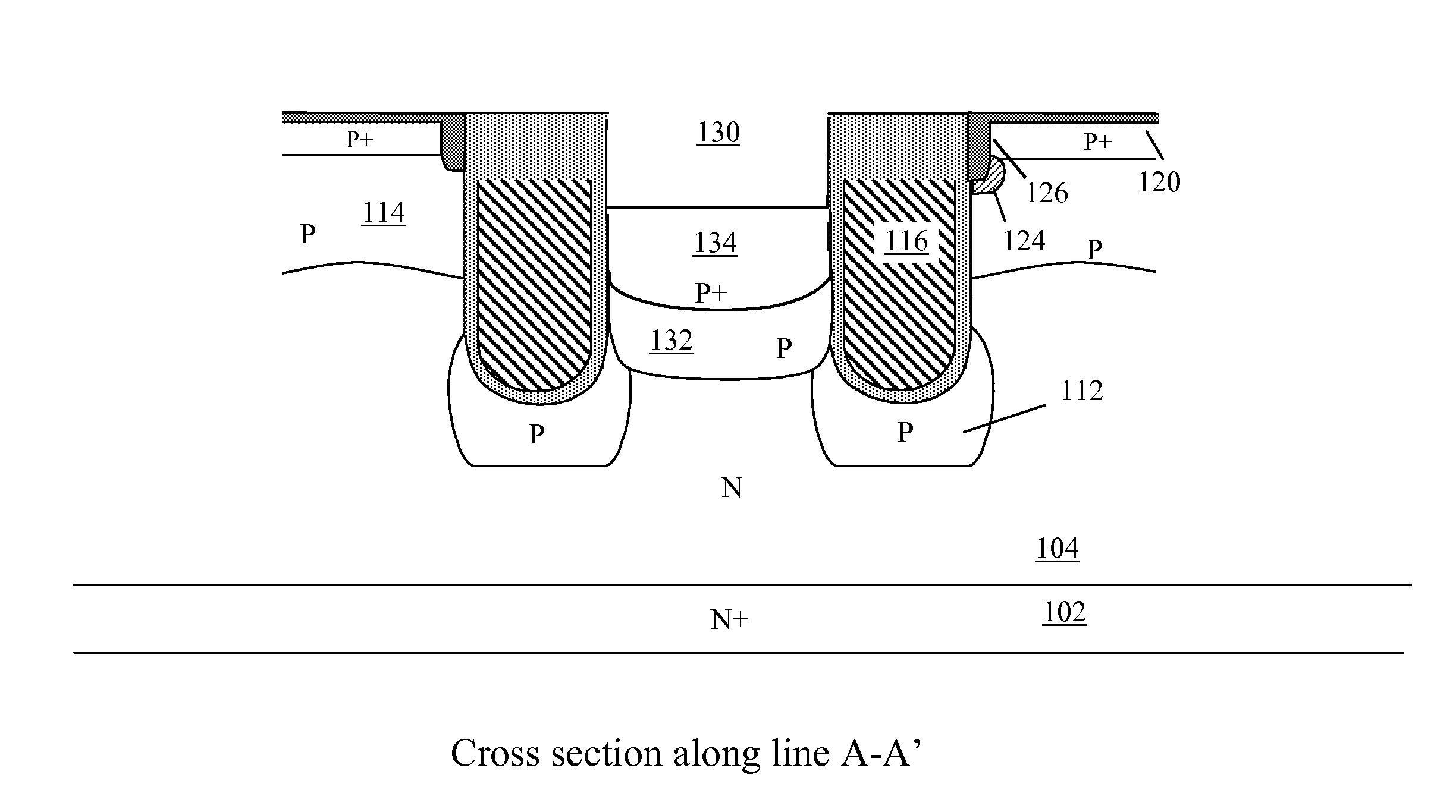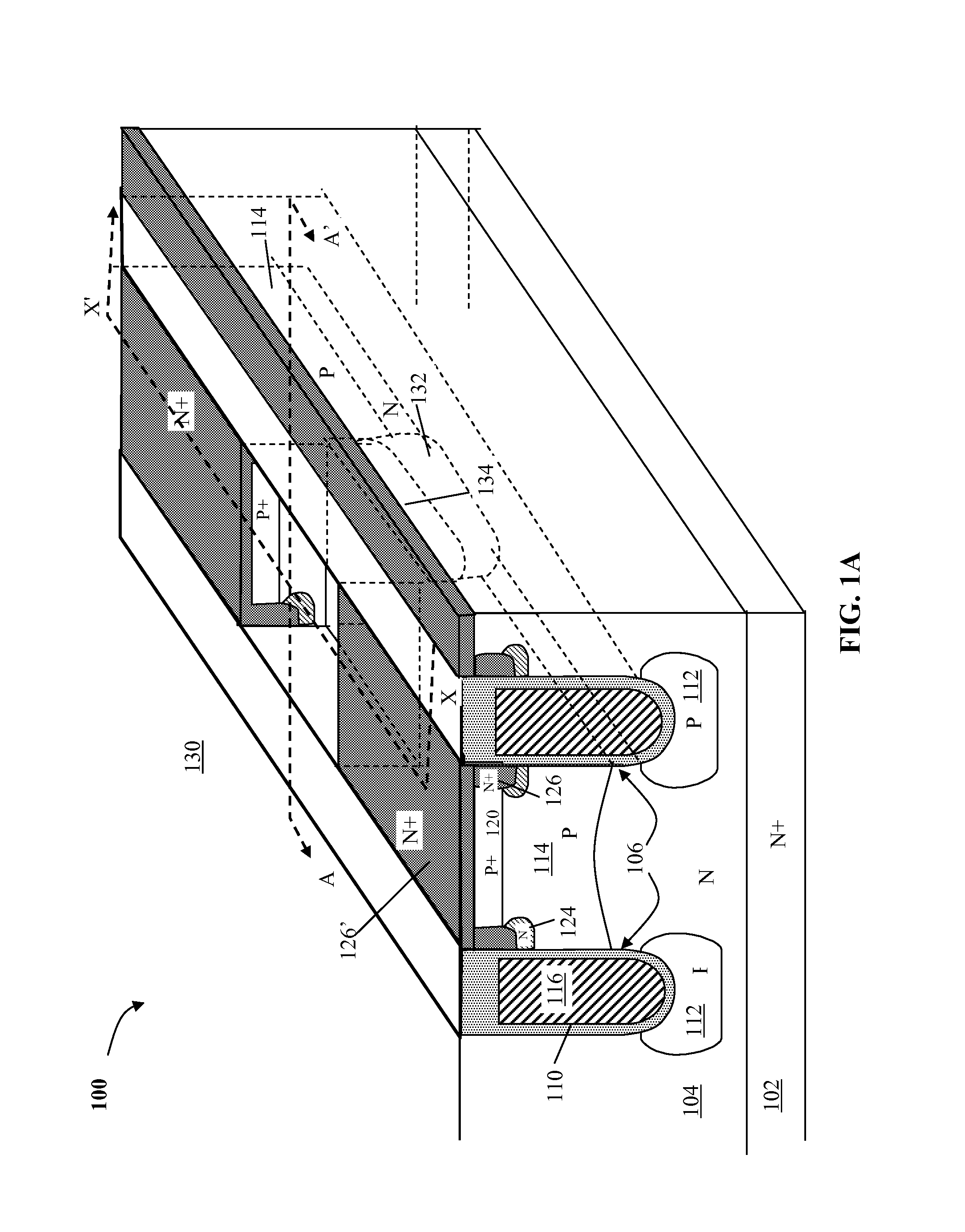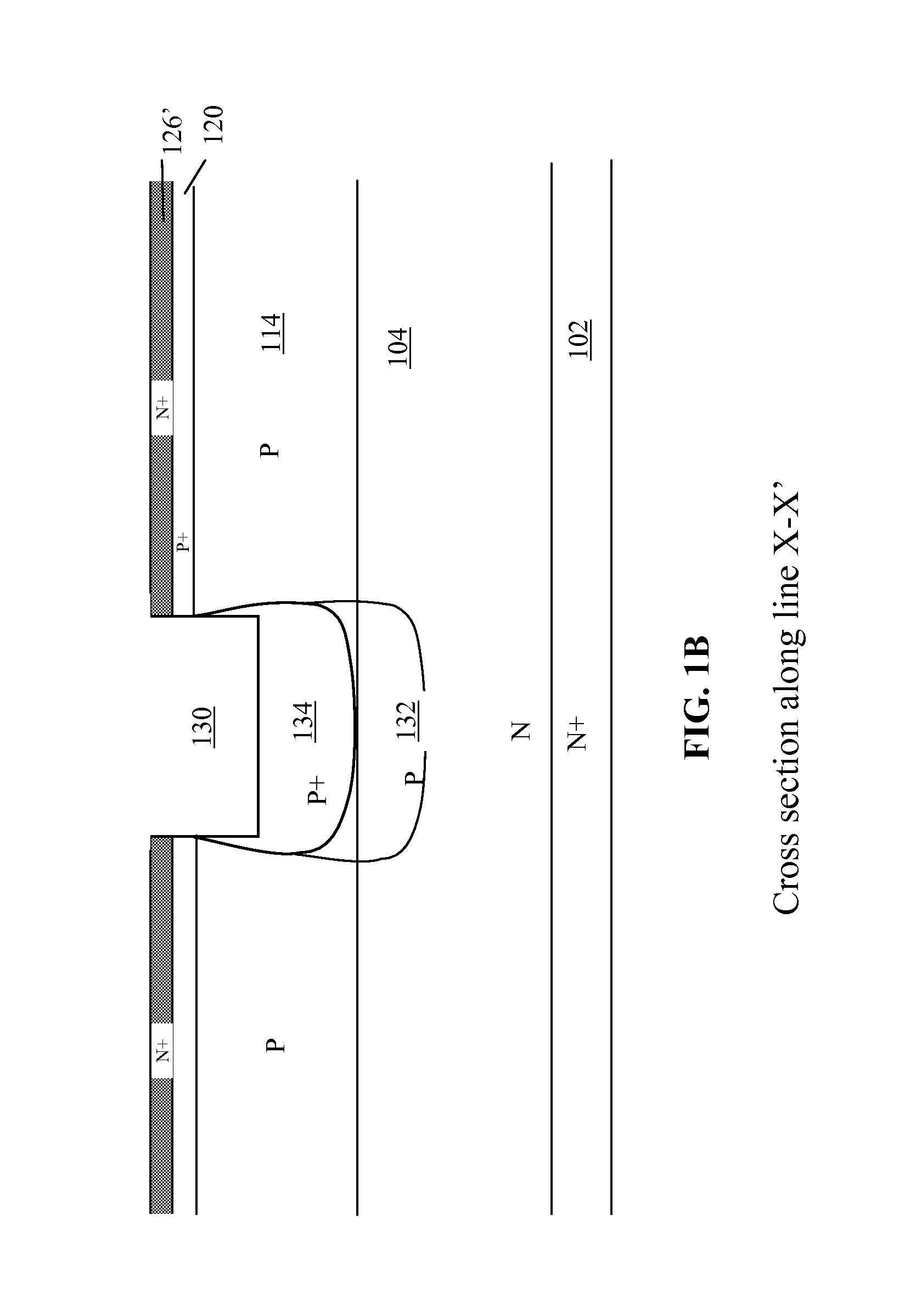Nano mosfet with trench bottom oxide shielded and third dimensional p-body contact
- Summary
- Abstract
- Description
- Claims
- Application Information
AI Technical Summary
Benefits of technology
Problems solved by technology
Method used
Image
Examples
second embodiment
[0040]The nano-MOSFET with third dimensional deep P+ contact of the type depicted in FIG. 1A can also be applied for a nano-MOSFET with a thick bottom oxide (TBO). FIG. 3A is a three-dimensional schematic diagram of a nano-MOSFET with third dimensional deep P+ contact with TBO 300 according to the present invention. The device 300 is similar to the device 100 except that, a thick bottom oxide (TBO) 312 is formed inside and at the bottom of each trench 106, under the gate electrode 116, for shielding the gate electrode 116 therefore shielding implant under the gate trench is not needed.
[0041]As a result the deep P implant region 132 below the third dimensional deep P+ contact region 134 becomes optional as the connection to the deep P implant region 112 is needed.
[0042]FIG. 3B is a cross-sectional schematic diagram of the device 300 after source and gate metal are formed. The structure of the device 300 in FIG. 3B is similar to the structure of the device shown in FIG. 2P, except tha...
third embodiment
[0044]Nano MOSFET technology can be further ruggedized by replacing N+ source region with Schottky Contact. FIGS. 4A-4N are cross-sectional schematic diagrams illustrating a process of manufacturing a Schottky-Source Nano MOSFET with third dimensional deep P+ contact and deep P implant for shielding gate electrode according to the present invention.
[0045]As seen in FIG. 4A, the process may begin by forming an initial layer of insulator, e.g., oxide 208, on the N-type semiconductor substrate 204, a lower portion 202 of which is heavily doped with the N-dopant to act as a drain. A first photoresist (not shown), which is a trench mask, may be formed on the oxide 208 and then developed followed by patterning the oxide 208 to form the openings in the oxide 208. The trench mask is removed and gate trenches 206, including contact gate trench 206-1, dummy gate trench 206-2, active gate trenches 206-3 and 206-4 as shown, may then be etched in the semiconductor substrate 204 through the openi...
fourth embodiment
[0052]The Schottky-Source Nano MOSFET configuration shown in FIG. 4N can be applied for Nano MOSFET with a thick bottom oxide (TBO). FIG. 5 is a cross-sectional schematic diagram illustrating a Schottky-Source Nano MOSFET device with third dimensional deep P+ contact and thick bottom oxide 512 according to the present invention. The device structure shown in FIG. 5 is similar to the structure shown in FIG. 4N except that the deep P implant regions 212 is replaced with thick bottom oxide 512 for shielding the gate electrode 216. As such, the process of making this device is similar to the process shown in FIGS. 4A-4N with the step of P-type dopant through the trench 206 in FIG. 4B being skipped.
[0053]In addition, the Schottky-Source Nano MOSFET configuration shown in FIG. 4N can also be implemented for devices having the Nano SGT MOSFET configuration with a gate structure similar to that in FIG. 9.
[0054]FIG. 6 is a cross-section view illustrating a termination area of the Nano MOSFET...
PUM
 Login to View More
Login to View More Abstract
Description
Claims
Application Information
 Login to View More
Login to View More - R&D
- Intellectual Property
- Life Sciences
- Materials
- Tech Scout
- Unparalleled Data Quality
- Higher Quality Content
- 60% Fewer Hallucinations
Browse by: Latest US Patents, China's latest patents, Technical Efficacy Thesaurus, Application Domain, Technology Topic, Popular Technical Reports.
© 2025 PatSnap. All rights reserved.Legal|Privacy policy|Modern Slavery Act Transparency Statement|Sitemap|About US| Contact US: help@patsnap.com



